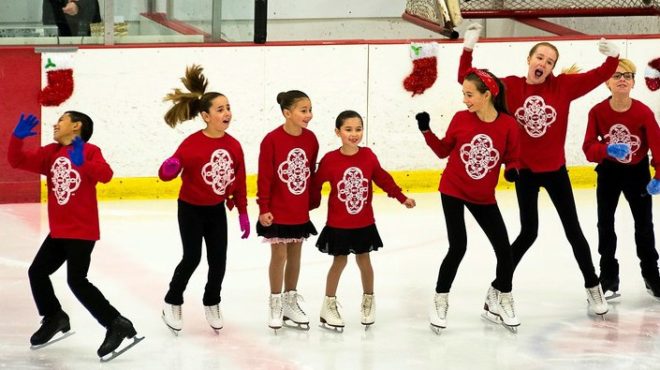10 Martial Arts Names You Need to Know

The world of martial arts is as diverse as it is captivating, with a rich tapestry of disciplines that span continents and centuries. Each martial art carries its own philosophy, techniques, and cultural significance, making it a fascinating subject for both practitioners and enthusiasts. Whether you’re a seasoned martial artist or a curious beginner, understanding the names and origins of these disciplines can deepen your appreciation for this ancient practice. Here are ten martial arts names you need to know, each with its unique history and characteristics.
1. Karate: The Way of the Empty Hand

Originating from Okinawa, Japan, Karate is one of the most globally recognized martial arts. The name “Karate” translates to “empty hand,” symbolizing the art’s focus on unarmed combat. Developed as a means of self-defense, Karate emphasizes striking techniques such as punches, kicks, knee strikes, and open-handed techniques known as “knife-hands.” Its philosophy revolves around discipline, respect, and self-improvement, making it not just a physical practice but a way of life.
2. Judo: The Gentle Way

Founded by Jigoro Kano in Japan in the late 19th century, Judo is a martial art that focuses on leveraging an opponent’s strength and momentum against them. The name “Judo” means “gentle way,” reflecting its principles of maximum efficiency with minimal effort. Judo is known for its throws, joint locks, and chokeholds, and it has become an Olympic sport, showcasing its global appeal and effectiveness.
3. Taekwondo: The Way of the Foot and Fist
Hailing from Korea, Taekwondo is renowned for its dynamic kicking techniques and fast, high-flying movements. The name “Taekwondo” is derived from the Korean words “tae” (foot), “kwon” (fist), and “do” (way), encapsulating the art’s focus on both striking and philosophical growth. Taekwondo is not only a martial art but also an Olympic sport, celebrated for its precision, speed, and acrobatic kicks.
4. Kung Fu: The Art of Skilled Workmanship
Kung Fu is a broad term encompassing numerous Chinese martial arts styles, each with its own history and techniques. The term “Kung Fu” itself refers to any skill achieved through hard work and practice, not just martial arts. Styles like Shaolin Kung Fu, Wing Chun, and Tai Chi are among the most famous, each with distinct philosophies and methods. Kung Fu’s influence extends beyond combat, emphasizing balance, harmony, and spiritual growth.
5. Muay Thai: The Art of Eight Limbs

Originating from Thailand, Muay Thai is known as the “Art of Eight Limbs” because it utilizes punches, kicks, elbows, and knees—effectively using eight points of contact. Historically, Muay Thai was developed as a form of close-combat that uses the entire body as a weapon. Today, it is a popular combat sport and a key component of mixed martial arts (MMA), celebrated for its power, efficiency, and cultural significance.
6. Brazilian Jiu-Jitsu: The Gentle Art
Brazilian Jiu-Jitsu (BJJ) is a grappling-based martial art that focuses on ground fighting and submission holds. Developed by the Gracie family in Brazil, BJJ emphasizes technique over strength, allowing smaller practitioners to defend against larger opponents. The art’s philosophy revolves around problem-solving and adaptability, making it a cornerstone of modern MMA and a popular discipline for self-defense.
7. Aikido: The Way of Harmonious Spirit
Founded by Morihei Ueshiba in Japan, Aikido is a martial art that focuses on redirecting an opponent’s energy rather than confronting it head-on. The name “Aikido” translates to “the way of harmonious spirit,” reflecting its principles of peace and unity. Aikido techniques include throws, joint locks, and pins, all designed to neutralize an attack without causing serious injury. Its philosophical underpinnings emphasize harmony with the universe and self-improvement.
8. Krav Maga: The Contact Combat System
Developed for the Israeli Defense Forces, Krav Maga is a practical and aggressive self-defense system designed for real-world scenarios. The name “Krav Maga” translates to “contact combat” in Hebrew, highlighting its focus on efficiency and survival. Krav Maga incorporates techniques from boxing, wrestling, aikido, judo, and karate, making it a versatile and effective martial art for personal protection.
9. Capoeira: The Dance of Freedom
Born in Brazil during the colonial era, Capoeira is a unique martial art that combines elements of dance, acrobatics, and music. Enslaved Africans developed Capoeira as a way to practice self-defense under the guise of dance, as martial arts were forbidden. The art is characterized by fluid, dance-like movements, intricate kicks, and sweeps, all performed to the rhythm of traditional Brazilian instruments. Capoeira is not just a physical practice but a cultural expression of freedom and resistance.
10. Kendo: The Way of the Sword
Kendo is a modern Japanese martial art that descended from traditional swordsmanship (kenjutsu). Practitioners use bamboo swords (shinai) and protective armor (bogu) to engage in controlled sparring. The name “Kendo” means “the way of the sword,” emphasizing discipline, respect, and spiritual growth. Kendo is not just about physical combat but also about cultivating a strong mind and character, making it a deeply philosophical practice.
What is the oldest martial art?
+While it's difficult to pinpoint the oldest martial art, Kung Fu is often considered one of the earliest, with roots tracing back over 4,000 years in China. Its origins are linked to ancient Chinese military practices and philosophical teachings.
Which martial art is best for self-defense?
+The effectiveness of a martial art for self-defense depends on the situation and the practitioner's skill level. Krav Maga and Brazilian Jiu-Jitsu are often recommended for their practical, real-world applications and focus on neutralizing threats quickly.
Can martial arts improve mental health?
+Yes, martial arts can significantly improve mental health by reducing stress, increasing focus, and boosting self-confidence. Disciplines like Tai Chi and Aikido are particularly known for their meditative and calming effects.
How long does it take to master a martial art?
+Mastery of a martial art is a lifelong journey, but achieving proficiency can take anywhere from 5 to 10 years of consistent practice, depending on the art and the individual's dedication.
Are martial arts suitable for children?
+Yes, martial arts are highly beneficial for children, teaching them discipline, respect, and physical fitness. Many martial arts schools offer classes tailored to children, focusing on safety and age-appropriate techniques.
The world of martial arts is vast and ever-evolving, with each discipline offering unique insights into combat, philosophy, and culture. Whether you’re drawn to the striking power of Taekwondo, the ground techniques of Brazilian Jiu-Jitsu, or the meditative flow of Tai Chi, there’s a martial art for everyone. By exploring these ten names, you’ve taken the first step into a world of endless discovery and growth.



